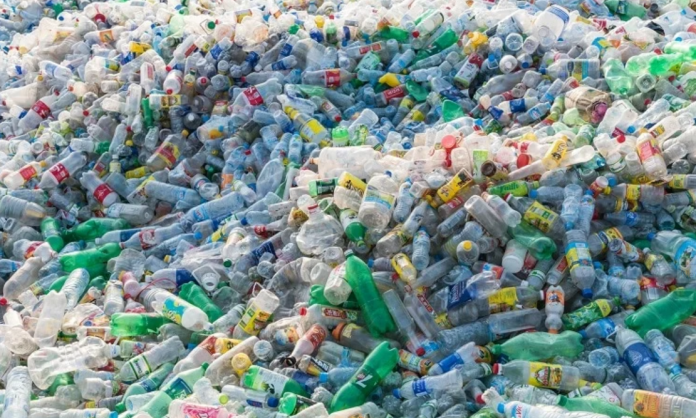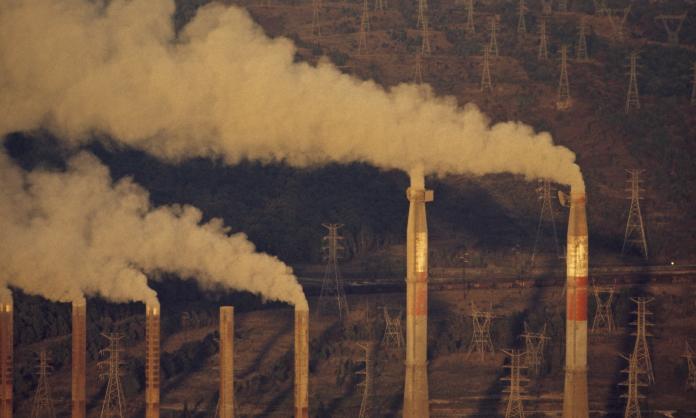Indian corporate giant Adani Enterprises recently announced plans to use coal from its Carmichael mine in Queensland to fuel a giant new plastic production plant in Gujarat. The announcement shocked many—after all, Adani and its Australian backers long argued that the coal from the mine was needed to produce cheap electricity that could help lift millions of people in India and surrounding nations out of poverty.
Given the efforts of the fossil fuel industry to “diversify” into plastic production, however, Adani’s announcement should come as no surprise. Ninety-eight percent of single-use plastics are manufactured from polymers produced from fossil fuels—predominantly crude oil and natural gas. Facing the possibility of reduced demand for the products of their mines, companies like Adani are increasingly looking to plastic production to safeguard their profits.
From one way of poisoning the Earth, they are turning to another. If the current surge continues, global production of single-use plastics could grow by over 30 percent in the next five years. By 2050, single-use plastic production could account for between 5 and 10 percent of the world’s greenhouse gas emissions.
According to the 2017 Carbon Majors Report, since 1988 just 100 companies have been responsible for 71 percent of global emissions. This fact is widely cited in the climate movement as a retort to those who would put the blame for climate change on the consumption habits of ordinary people. With plastic production, it’s even starker. A new report by the Minderoo Foundation, the Plastic Waste Makers Index, found that in 2019, “just 20 polymer producers accounted for more than half of all single-use plastic waste generated globally—and the top 100 accounted for 90 percent”.
This handful of companies controls the pipeline of new plastics production. They decide what products are available on the market and how they’re produced, long before they ever get into the hands of consumers.
These companies, the report says, “are the source of the problem, and must become part of the solution”. The incentive for doing so is left unclear. The plastic giants’ business model is highly profitable. As the report itself notes, it’s far cheaper to produce plastics new from fossil fuels than from recycled material: “Consider the cost of door-to-door collecting, sorting and recycling of household plastic waste versus the economies of scale enjoyed by virgin polymer producers with ready access to fossil fuels via purpose-built pipelines”.
Indeed, global recycling rates have been stuck at between 10 and 15 percent for over 30 years. Meanwhile, of the top 100 polymer producers, 54 have no policies, commitments or targets whatsoever to replace fossil fuels with sustainable alternatives, a further 26 have no clear targets or timelines, and the remaining 20 have made and acted on some commitments, but are far from achieving anything like a “circular” plastics economy—one in which no new polymers are produced.
If the layer of companies responsible for plastic production is small, the layer profiting from it isn’t: from the base of polymer production rises a tower of vested interests.
Picture the polymer producers as the foundations, dominated by some of the world’s biggest fossil fuel companies like ExxonMobil, Sinopec, Saudi Aramco and PetroChina. Above them, on the first 20 floors, are 20 of the world’s largest banks, which have lent nearly US$30 billion for polymer production since 2011, led by Barclays, JPMorgan Chase and Citigroup. Next you have 20 floors of institutional asset managers, headed by the giants of Vanguard Group, BlackRock and Capital Group, holding shares worth over US$300 billion in the parent companies of the polymer producers, with US$10 billion directly invested in the production of virgin (i.e. non-recycled) polymers.
Then you have the state investors, which collectively hold an estimated 30 percent of the sector—the top third of the tower. In the penthouses you have Saudi Arabia, China and the United Arab Emirates, which have over US$2 trillion invested, including US$42 billion directly invested in virgin polymer production.
Everyone in this tower has an interest in keeping it standing. And this image only captures part of what we’re up against. There are hundreds more companies, banks and investors, and dozens more states involved. Nor does the above image account for the value plastic packaging has for the profit-driven competition between otherwise indistinguishable brands.
A few more people using “keep cups” or reusing their shopping bags won’t halt the growth of this multi-trillion dollar industry. Toppling the world’s towers of plastic will take a movement powerful enough to haul up the foundations, and replace the whole rotten edifice with a system focused on human need, not profit—one in which a rapid reduction in the production and use of single-use plastics will be a top priority.










